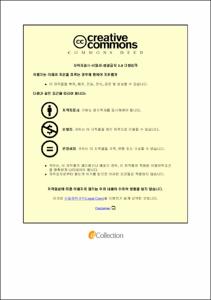JEJU Repository
General Graduate School
Interdisciplinary Programs
Interdisciplinary Postgraduate Program in Marine Meteorology
Improvement of tropical cyclone intensity predictions using realistic air-sea exchange coefficients and predictors
- Abstract
- While tropical cyclone (TC) track forecasts have been improved dramatically for last decades, the accuracy of intensify forecasts over the same time frame has been shown little or no improvement. It is essential to improve TC intensity prediction of statistical and dynamical models because TC forecast of operational centers over the world is closely related with their prediction results. To improve statistical model, a revised predictor called the net energy gain rate (NGR) is suggested by considering wind dependent drag coefficient based on the existing maximum potential intensity theory. A series of wind speed dependent NGR, known as NGR-w, is calculated based on pre-TC averaged ocean temperatures from the surface down to 120 m (at 10-m intervals) to include the TC-induced vertical mixing for 13 years (2004–2016) in the western North Pacific. It turns out that the NGR50-w (NGR-w based on temperature averaged over top 50 m) has the highest correlation with 24-h TC intensity change compared with the commonly used sea surface temperature-based intensification potential (POT), depth-averaged temperature-based POT (POTDAT), and constant drag coefficient in the NGR. To demonstrate the effectiveness of the NGR50-w, we designed and conducted experiments for training (2004–2014) and testing (2015–2016). The model with the NGR50-w shows greater skill than the model with POTDAT or POT by reducing prediction errors by about 16%. To improve dynamic model, we present a new parameterization of air-sea fluxes at extreme wind speeds from 40 m s−1 to 75 m s−1, which covers the range of major TCs. Our approach assumes that the TC can reach its maximum potential intensity (MPI) in the absence of influences of external forcing such as vertical wind shear or other environmental constraints. With this method, the ratio of the enthalpy and momentum exchange coefficient (Ck/Cd) under the most intense TCs can be estimated without direct flux measurements. The estimation showed that Ck/Cd increases with wind speed at extreme winds above 40 m s−1. Two types of surface layer schemes of the Hurricane Weather and Research Forecast (HWRF) were designed based on the wind speed dependency of the Ck/Cd found at high winds: (i) an increase of Ck/Cd based on decreasing Cd (Cd_DC) and (ii) an increase of Ck/Cd based on increasing Ck (Ck_IC). The modified surface layer schemes were compared to the original HWRF scheme (using nearly fixed Cd and Ck at extreme winds; CTRL) through idealized experiments and real-case predictions. The idealized experiments showed that Cd_DC reduced frictional dissipation in the air-sea interface as well as significantly reduced sea surface cooling, making the TC stronger than other sschemes. As a result, Cd_DC reduced the mean absolute error and negative bias by 15.0% (21.0%) and 19.1% (32.0%), respectively, for all lead times of Hurricane Irma in 2017 (Typhoon Mangkhut in 2018) compared to CTRL. This result suggests that new parameterization of Ck/Cd with decreasing Cd at high winds can help improve TC intensity prediction, which currently suffers from underestimating the intensity of the strongest TCs.
- Issued Date
- 2023
- Awarded Date
- 2023-02
- Type
- Dissertation
- Alternative Author(s)
- Lee, Woo jeong
- Affiliation
- 제주대학교 대학원
- Department
- 대학원 해양기상학협동과정
- Advisor
- 문일주
- Table Of Contents
- Contents
Abstract ⅰ
List of Figures ⅲ
List of Tables ⅶ
List of Acronyms ⅷ
1. Introduction 1
2. An index to better estimate tropical cyclone intensity change in the western North Pacific 5
2.1. Introduction 5
2.2. Data and methods 9
2.2.1. TC best-track, atmospheric and oceanic data 9
2.2.2. The new NGR 10
2.3. Results 12
2.4. A comparison with predictors from other recent studies 20
2.5. Discussion and conclusion 22
3. New parameterization of air-sea exchange coefficients and its impact on intensity prediction under major tropical cyclones 26
3.1. Introduction 26
3.2. Data and methods 31
3.3. New parameterization of Ck/Cd 36
3.4. Effects of new Ck/Cd parameterization on TC intensity prediction 42
3.5. Discussion and conclusion 53
4. Conclusion 57
Appendix 60
References 61
- Degree
- Doctor
- Publisher
- 제주대학교 대학원
- Citation
- 이우정. (2023). Improvement of tropical cyclone intensity predictions using realistic air-sea exchange coefficients and predictors.
- Appears in Collections:
- Interdisciplinary Programs > Interdisciplinary Postgraduate Program in Marine Meteorology
- 파일 목록
-
-
Download
 Improvement of tropical cyclone intensity predictions using realistic air-sea exchange coefficients .pdf
기타 데이터 / 1.8 MB / Adobe PDF
Improvement of tropical cyclone intensity predictions using realistic air-sea exchange coefficients .pdf
기타 데이터 / 1.8 MB / Adobe PDF
-
Items in Repository are protected by copyright, with all rights reserved, unless otherwise indicated.